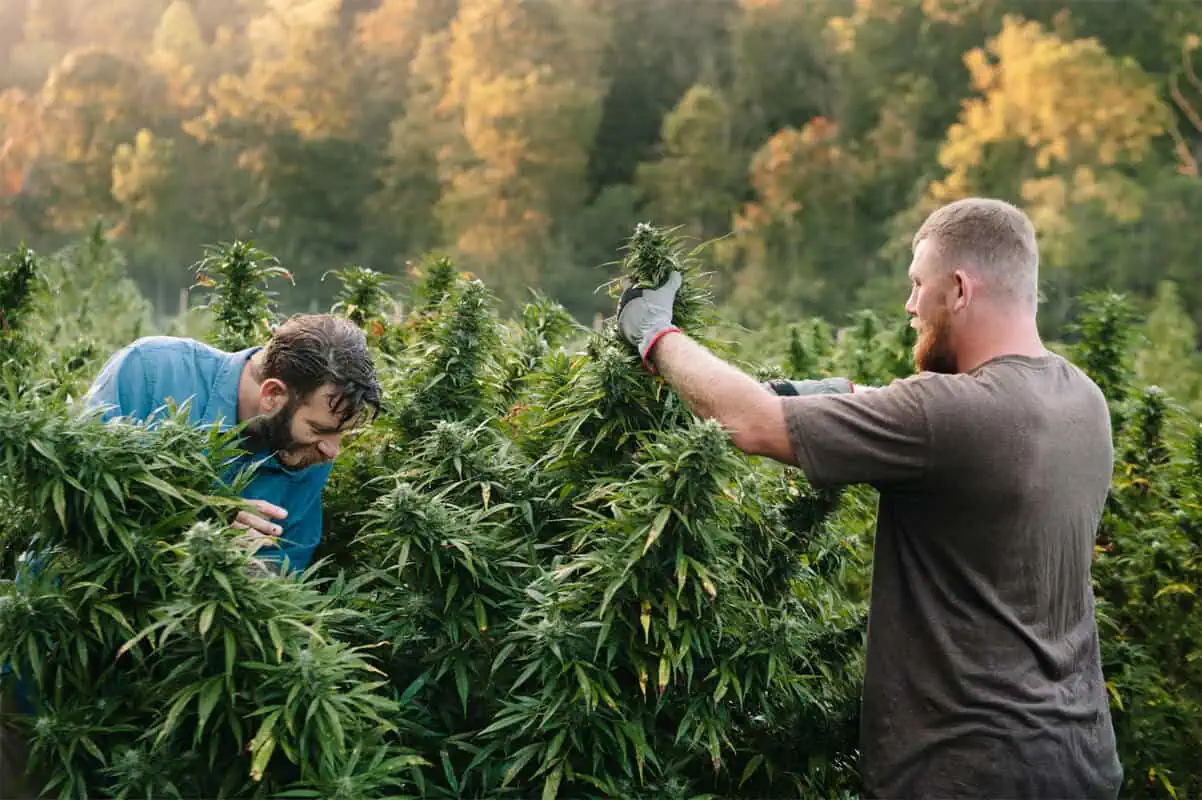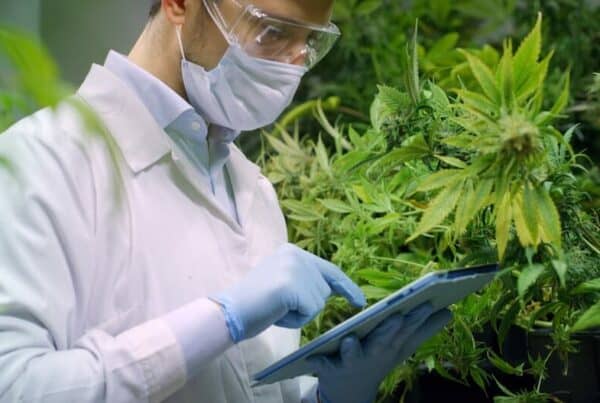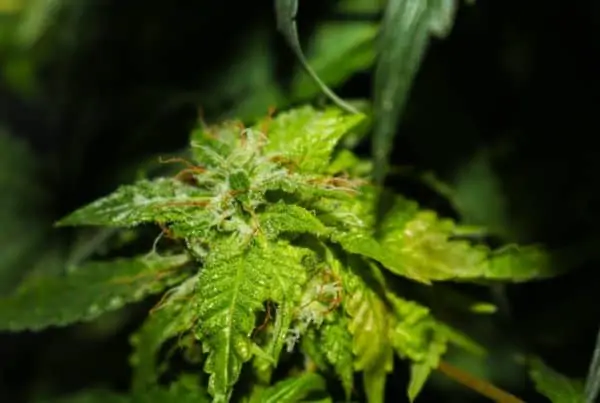TABLE OF CONTENTS
Cannabis can be a relatively easy plant to grow, but even experienced growers make mistakes. By learning how to avoid common errors, you can ensure a bountiful harvest. Lighting is the most crucial factor, which we have saved for last in our list, and it also includes heat, pH, soil, and overwatering. The energy that cannabis plants need to thrive and produce buds depends heavily on proper lighting. You'll learn more about cannabis cultivation at the end of this article.
Table of Contents
ENROLL NOW!
Call Us (844) 484-3288
Best Practices in Cannabis Cultivation
Preventing Infection with Tissue Culture
The best way to prevent infecting your facility is to introduce new genetics using tissue culture. The only way to ensure you start with clean stock is through tissue culture or meristem cultures.
Everyone knows that clones should be quarantined before they are introduced into a pest-free environment. I've heard about large facilities getting infected with broad or russet-colored mites because they brought in infected clones. Sometimes, facility workers and growers don't clean or change their clothes after working in quarantine areas.
Using an Off-site Environment
The second best option is an off-site environment that allows compartmentalization, so new specimens can be kept separate from others. Some people quarantine genetics in the same place they grow, or nearby, but this is risky because they shouldn't be so close unless they have been deemed pest- and disease-free.
Testing and Monitoring
Test any samples that are free of pests and diseases for powdery mildew in the lab and take a microscopic record. You can view the video on a big screen to better detect pests, their eggs, larvae, or feces. This step is crucial because broad mites and russet mites are destructive to a business.
Dealing with Outbreaks
Once an outbreak has been confirmed, the only way to be sure of a cure is to destroy the plants and disinfect the facility. Then, start over. It makes sense that a cannabis grower would do all they can to avoid pests and diseases, given that infected marijuana is worthless. Other prevention methods include not using infected genetics (infested clones), personal decontamination, and changing clothing.
Protecting Air Intakes
The first point of entry for infection is usually the intake of fresh air. Bug screens are a must for greenhouse growers. They should be used as a prefilter.
Air Filtration
Both indoor and greenhouse growers should, whenever possible, use HEPA filters to filter all air entering their growing areas. By filtering and sterilizing the air in all cultivation areas, mold and mildew can be prevented from spreading.
Proper Water Treatment
Sustainable production helps growers reduce waste and stand out in a crowded market. Growing operations should include wastewater recycling as one of many sustainable practices. However, some growers reuse untreated water due to space and financial restrictions. Reusing unsterilized or untreated water can lead to disasters. It can disrupt your pH, nutrient levels, and spread diseases throughout your entire crop.
Before reapplication, growers should filter and sterilize water properly. They should use a reverse osmosis filter before using recycled water. Sterilizing the water with UV sterilizers or ozone is also essential.
Utilizing Recycled Materials
If sustainability matters to you, then use recycled materials whenever possible in packaging and irrigation systems. Ideally, cannabis waste would be used to package cannabis products. Growers can make plastic using cellulose from extraction waste. They can also use pulp from stems and stalks, as well as biomass and extraction waste, to create packaging.
Sort by Size
The density of the buds plays a crucial role during the drying and curing process. Small buds dry quicker than large buds. Therefore, if you wait for the large buds to completely dry, your small and medium buds may become over-dried. Since terpenes evaporate along with the water, over-dried buds are less aromatic and flavorful.
Sort large, medium, and small buds to control the drying rate for each group. If cultivators dry each batch by bud size and then combine them as they cure, the end result will be a homogeneous, uniformly dried product with maximum terpene retention, assuming all other conditions are met.
Proper Storage
Store the buds properly, as THC rapidly degrades when exposed to heat, oxygen, and light, which are the main enemies of THC. Cannabis has a shelf life of six months, even when stored properly. After that, THC starts to transform into CBN, meaning the cannabis has not reached its maximum THC or terpene levels.
ENROLL NOW!
Call Us (844) 484-3288
Worst Practices in Cannabis Cultivation
Not Knowing What You Are Growing
You might get a bag of seeds for “some great weed” and feel happy because you saved money on seeds. But if you don't know whether the seeds are sativa or autoflowers, you're off to a bad start.
There are many different types of cannabis seeds, and they all grow differently. For example, indica autoflowers behave very differently from photoperiod Sativas. Some strains grow better in cool climates, while others need a warm, sunny environment. Some strains need lots of nutrients, while others need just light feeding. You get the idea.
Cannabis seeds require the following to germinate:
- A dark and humid environment, but not wet.
- The ideal temperature for germination is 22-25 degrees Celsius.
- Relative humidity should be between 70% and 90%.
- A windowsill can be a good alternative to fluorescent lighting.
- Avoid handling the seeds.
- If you are using rockwool for germination, make sure the pH is between 5.8 and 6.2.
- Don’t reuse potting soils.
- Do not use soil that lacks nutrients.
- Don’t use contaminated soils that may have fungi, pests, etc.
Irregular Humidity for Seedlings
Seedlings are very delicate and can easily die if the conditions aren't just right, especially with humidity and moisture. Here's what you need to know:
If the humidity is too low:
- Keep the soil moist, but be careful not to make it soggy.
If there's too much moisture or the humidity is too high:
- Overwatering is harmful to seedlings. High humidity or too much water can cause a problem called damping-off. This makes seedlings weak and causes them to fall over. Once this happens, they can't be saved. To prevent this, use a sterile germination medium and avoid too much humidity.
Overwatering and Overfeeding
- Overwatering
Overwatering can be much more harmful than not watering enough. Plants can usually bounce back if they dry out a bit. However, overwatering can lead to root rot and fungus because the soil stays too wet. It's important to let the soil dry completely between waterings. It's better to water less often than too much!
- Overfeeding
People love their plants and think giving them more nutrients is a good idea. It's not. Overfeeding can cause Nutrient Burn or, even worse, nutrient lockout due to minerals building up in the soil. If this happens, you will need to flush the soil with water to get it back to the ideal pH. Be careful not to overdo it with the nutrients!
Non-monitoring of PH Level
Monitoring is crucial because cannabis only absorbs nutrients within a narrow window. If the pH level drops too low or rises too high, your plants can get sick.
Correct pH levels:
- Soil: 6.0-7.0
- Soilless hydroponics: 5.5 to 6.5
You can use pH up or pH down products to adjust the pH of your water. Make sure to have a pH meter or measuring drops handy.
Ventilation Is Not Adequate
Mold can develop if there isn't enough ventilation, especially when growing indoors. For small grows, a simple fan that creates a gentle breeze over your plants is usually enough. However, larger operations will need more equipment to keep the air moving and prevent it from becoming stagnant.
If you're growing outdoors, air circulation shouldn't be an issue. However, there are still other factors to consider. You'll want to protect your plants from thieves. Planting companion species can help disguise your crops and mask their smell. Choose cannabis strains that are naturally short and less visible.
Heat-Stressing Your Plants
Heat stress can cause problems both indoors and outdoors.
“
There are over 300,000 jobs in the cannabis industry. CTU trained me for one of them!

Makes $24.50 @ THC +
- Indoors
When your grow lights are too close to your plant canopy, heat can become a problem. If you notice signs of lightburn, such as wilted and brown leaves on the top of your plants, move your lights further away.
- Outdoors
Heat stress can also be an issue if you're growing outside in a hot, sunny climate. Make sure your plants have some shade, especially around noon. You can protect your plants by installing shade or choosing a location with natural shade.
Harvesting Too Early or Too Late
Harvesting too early or too late is one of the most frustrating mistakes you can make, especially if everything else has gone well. It's important not to harvest your buds before they reach their peak potency. However, you don't need to wait until the very last moment to cut them.
Enroll in Cannabis Training University Today!
Unlock the full potential of your cannabis cultivation with expert guidance from Cannabis Training University. Whether you're just starting out or looking to refine your growing techniques, our comprehensive courses cover everything from the basics of planting to advanced harvesting techniques.
Don't let common growing mistakes hold you back. Enroll now and ensure your success in the thriving field of cannabis cultivation!












 Jeff was involved in an accident where he endured a traumatic brain injury. He had a week-long stay in ICU where brain surgeons
Jeff was involved in an accident where he endured a traumatic brain injury. He had a week-long stay in ICU where brain surgeons  100% risk free money back guarantee within 48 hours after purchase if student has not completed any of the courses or exams.
100% risk free money back guarantee within 48 hours after purchase if student has not completed any of the courses or exams.